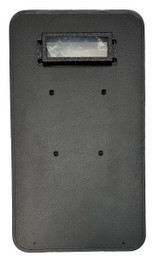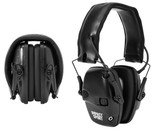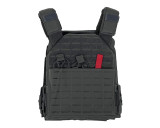Vortex Venom vs. Viper Red Dot Sight Comparison
Vortex Venom vs. Viper Red Dot Sight: An In-Depth Comparison
When it comes to red dot sights, Vortex Optics offers a range of options tailored for shooting enthusiasts and professionals alike. The Vortex Venom and Viper are two popular models, each with unique features designed to enhance accuracy and usability. This detailed comparison will help you understand their specifications, advantages, disadvantages, and applications.
Vortex Venom: Specifications and Features
Key Specifications
- Dot Size: 3 MOA or 6 MOA options
- Magnification: 1x
- Battery Life: Up to 30,000 hours (lowest brightness)
- Construction: Aluminum housing, waterproof, and shockproof
- Mounting: Compatible with various firearms, including pistols, shotguns, and rifles
Features Overview
The Venom is engineered with versatility in mind. Its lightweight design and compact size make it a top choice for users who prioritize ease of use and portability. The Venom’s 1x magnification ensures quick target acquisition, while its fully multi-coated lens provides a crystal-clear view even in low-light conditions. The device’s automatic brightness adjustment adapts to environmental lighting, and manual settings allow for precision control.
Pros
- Exceptional battery life for extended usage
- Wide field of view enhances situational awareness
- Durable construction ideal for rigorous environments
- Easy-to-use controls, including a top-load battery compartment for quick replacement
Cons
- Slightly bulkier than some competitors
- Limited adjustment range for windage and elevation
- Auto-brightness mode may not suit all preferences
Vortex Viper: Specifications and Features
Key Specifications
- Dot Size: 6 MOA
- Magnification: 1x
- Battery Life: Up to 20,000 hours (lowest brightness)
- Construction: Aluminum housing with an ultra-low profile
- Mounting: Ideal for pistols with slide-mounted applications
Features Overview
The Viper is specifically designed for handgun enthusiasts. Its ultra-low profile minimizes sight obstruction, allowing for co-witnessing with iron sights. The 6 MOA dot size makes it perfect for close-range engagements, providing fast target acquisition. The device features a fully multi-coated lens for optimal clarity and an easy-access battery compartment.
Pros
- Ultra-low profile design ideal for handguns
- Large 6 MOA dot ensures rapid target acquisition
- Durable build withstands recoil and harsh conditions
- Simple and intuitive brightness adjustment
Cons
- Shorter battery life compared to the Venom
- Limited compatibility with rifles or shotguns
- Smaller field of view due to compact size
Head-to-Head Comparison
| Feature | Vortex Venom | Vortex Viper |
|---|---|---|
| Dot Size | 3 MOA or 6 MOA | 6 MOA |
| Battery Life | Up to 30,000 hours | Up to 20,000 hours |
| Profile | Medium | Ultra-low |
| Field of View | Wide | Narrower due to compact design |
| Best Use Case | Versatile for rifles, shotguns | Handgun-specific applications |
Expert Advice
Choose Based on Application: If you require a sight for diverse firearms, the Venom’s adaptability makes it a better choice. For handgun users, the Viper’s low profile is unmatched.
Battery Considerations: Users planning extended outdoor sessions should prioritize the Venom for its superior battery life.
Dot Size Matters: A 6 MOA dot, as found in the Viper, is excellent for close-range engagements, while the Venom’s 3 MOA option offers precision for mid-range use.
Maintenance and Durability: Both sights are built to last, but regular maintenance of the lenses and battery compartments will ensure optimal performance.
Conclusion
The Vortex Venom and Viper cater to different needs, ensuring that users have reliable options regardless of their shooting style or firearm type. The Venom shines in versatility and endurance, while the Viper excels in handgun-specific applications. By understanding their features and limitations, you can confidently select the red dot sight that best suits your requirements.
Recent Posts
-
Understanding Ballistic Shield Ratings and Their Applications
The Trusted Name in Tactical Defense - BattleSteel® When it comes to protecting those who protect us …2025-04-19 -
The Importance of Hearing Protection in Tactical Environments
The Legacy of BattleSteel® BattleSteel® is a trusted name in the world of tactical defense equipment …2025-04-14 -
How to Properly Fit and Wear a Plate Carrier
About BattleSteel and Their Mission BattleSteel is a trusted name in the tactical gear industry, ren …2025-04-11




